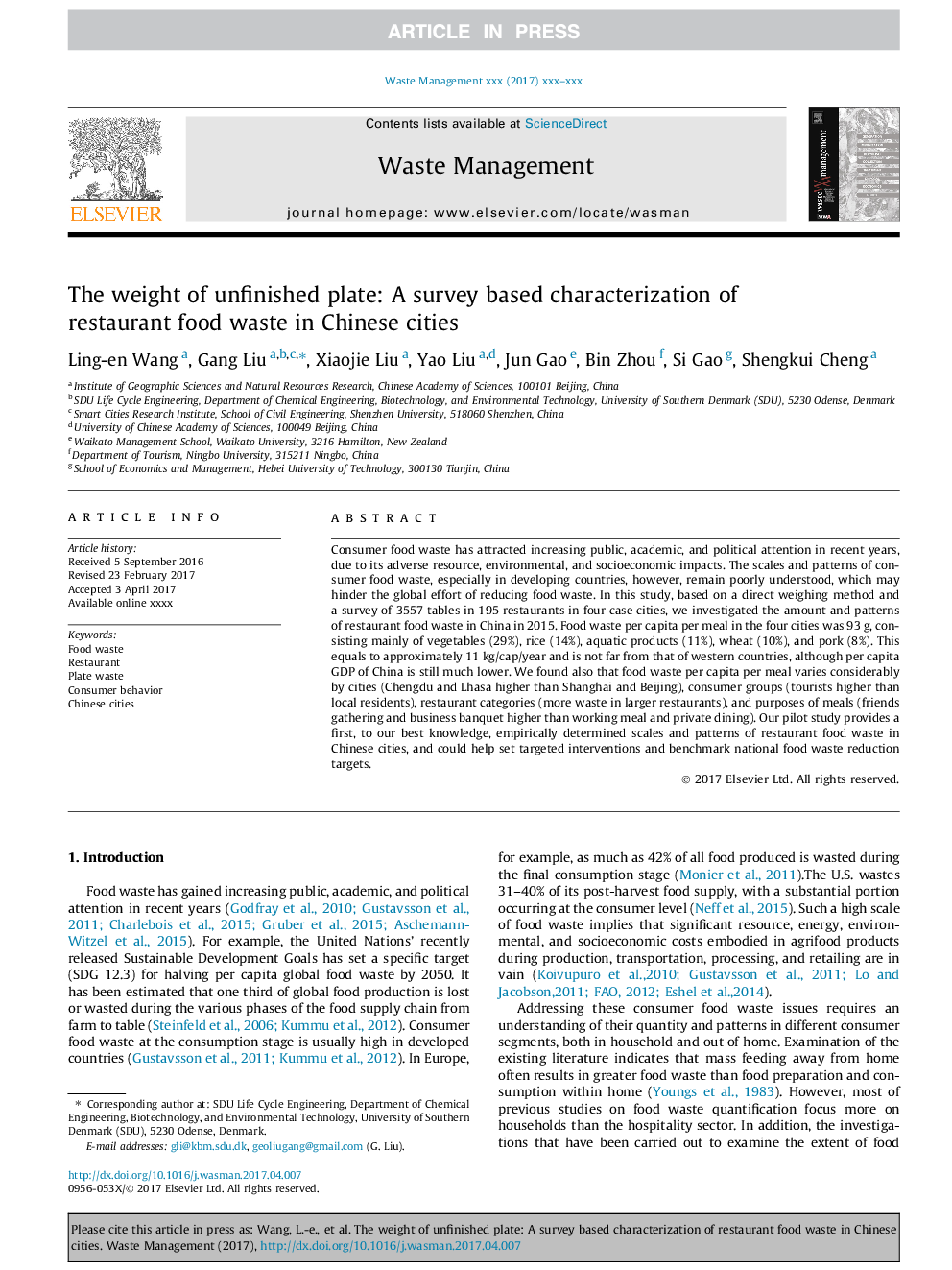| Article ID | Journal | Published Year | Pages | File Type |
|---|---|---|---|---|
| 5756728 | Waste Management | 2017 | 10 Pages |
Abstract
Consumer food waste has attracted increasing public, academic, and political attention in recent years, due to its adverse resource, environmental, and socioeconomic impacts. The scales and patterns of consumer food waste, especially in developing countries, however, remain poorly understood, which may hinder the global effort of reducing food waste. In this study, based on a direct weighing method and a survey of 3557 tables in 195 restaurants in four case cities, we investigated the amount and patterns of restaurant food waste in China in 2015. Food waste per capita per meal in the four cities was 93Â g, consisting mainly of vegetables (29%), rice (14%), aquatic products (11%), wheat (10%), and pork (8%). This equals to approximately 11Â kg/cap/year and is not far from that of western countries, although per capita GDP of China is still much lower. We found also that food waste per capita per meal varies considerably by cities (Chengdu and Lhasa higher than Shanghai and Beijing), consumer groups (tourists higher than local residents), restaurant categories (more waste in larger restaurants), and purposes of meals (friends gathering and business banquet higher than working meal and private dining). Our pilot study provides a first, to our best knowledge, empirically determined scales and patterns of restaurant food waste in Chinese cities, and could help set targeted interventions and benchmark national food waste reduction targets.
Related Topics
Physical Sciences and Engineering
Earth and Planetary Sciences
Geotechnical Engineering and Engineering Geology
Authors
Ling-en Wang, Gang Liu, Xiaojie Liu, Yao Liu, Jun Gao, Bin Zhou, Si Gao, Shengkui Cheng,
